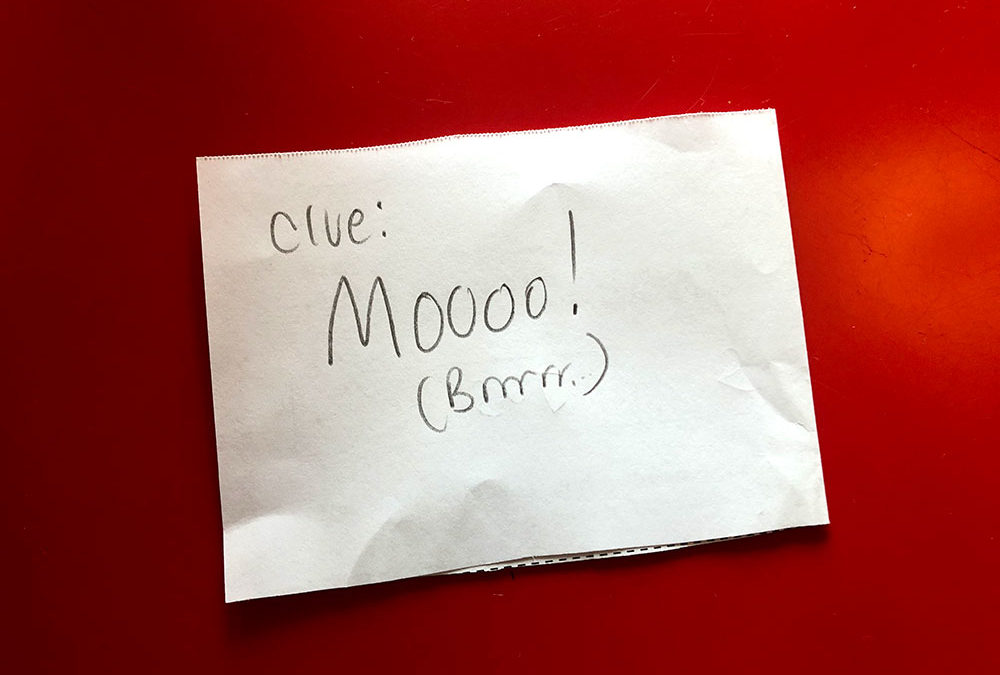The Setup: The setup on this one takes a while to think through and to place the cards. I write up all the clues, then arrange them in the order of the path and number them. I build in lots of upstairs/downstairs, inside/outside to take maximum time. Then, I flip them over and jot down on the back where they should be placed (based on the one before it). Then I group them by location so I don’t have to run up upstairs/downstairs, inside/outside to place them.
Variations: This is easy to vary this with age. For non-readers, hope you can draw! For new readers, put a word or two on each paper telling them where to go next…the challenge is figuring out the word. You can use locations (bedroom, desk), or items (like carrots–that would be the fridge drawer where carrots are). I pick words they will be able to figure out. For older kids, harder clues like “this the the door I’m always reminding you to close” or “you might pretend to heat up soup here but you’d never eat it” (microwave in the play kitchen).
Things I have learned doing this a few times:
- With one reader and one younger, give them jobs to make sure the little one isn’t left out after the older one reads the clue and races off. Early on, when I was just doing words, older kid would read it, but only the younger kid could touch and hold all the cards. Then later, when I had a reader and one learning, I’d underline a word in the clue and the younger one had to figure out that word, and then of course still define who would hold the cards. When everyone can read, I have them take turns for who reads, answers, and holds each card.
- Problems have arisen when kids get an answer wrong and go to the wrong location, but there’s a card there… so they get out of order (and are done way too soon). To combat this, I number the cards, then they will be able to tell if they are looking at the next card in the set or not. If not, they have to go back and re-think the answer.
- Make sure to tell the kids if they see other cards along the way, not to pick them up.

